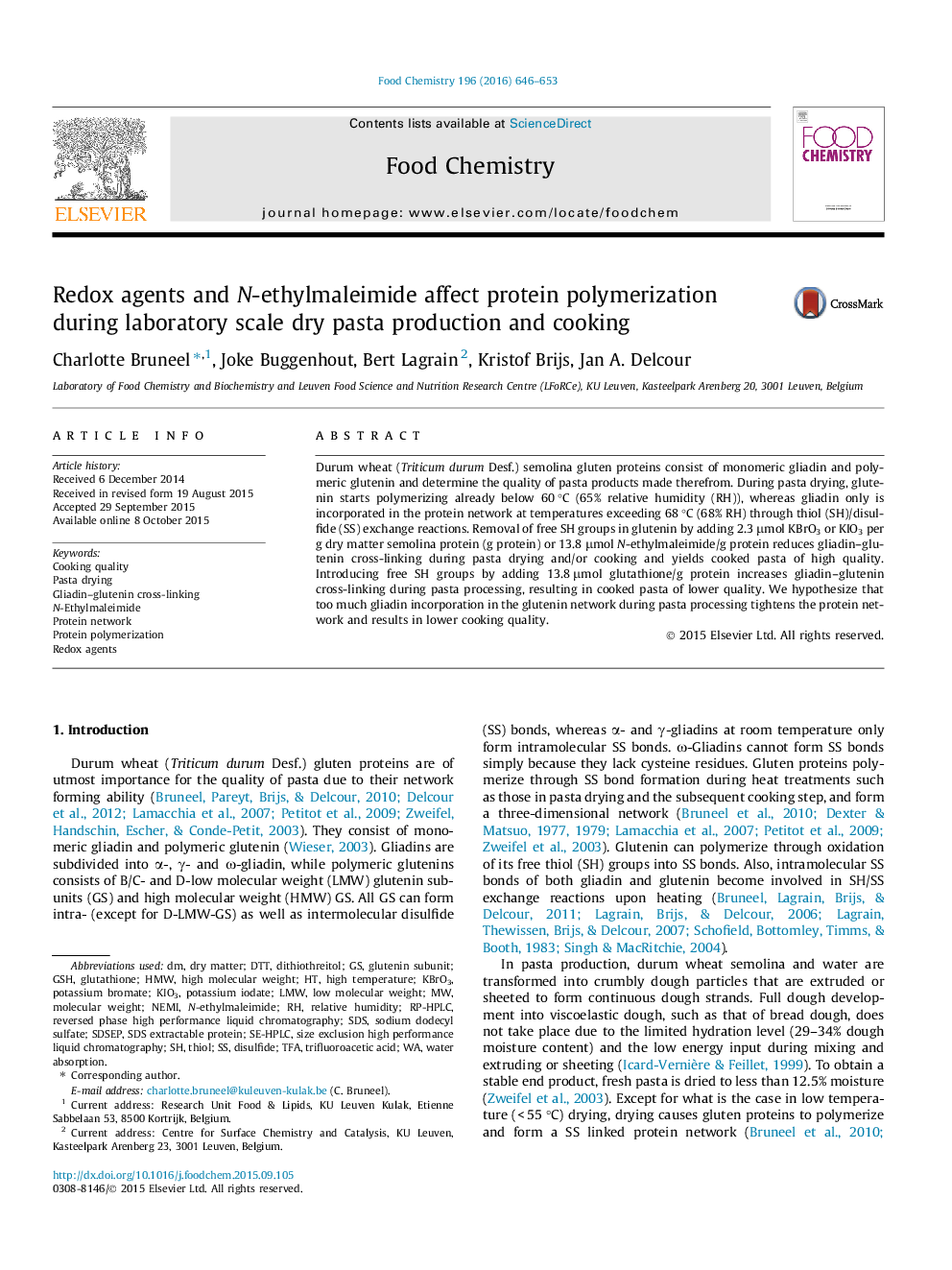| Article ID | Journal | Published Year | Pages | File Type |
|---|---|---|---|---|
| 1184189 | Food Chemistry | 2016 | 8 Pages |
•The level of free SH groups impacts protein cross-linking during pasta processing.•Removing free SH groups reduces protein cross-linking resulting in high quality pasta.•Introducing free SH groups increases protein cross-linking resulting in low quality pasta.•Too much gliadin incorporation in the protein network is undesirable to produce high quality pasta.
Durum wheat (Triticum durum Desf.) semolina gluten proteins consist of monomeric gliadin and polymeric glutenin and determine the quality of pasta products made therefrom. During pasta drying, glutenin starts polymerizing already below 60 °C (65% relative humidity (RH)), whereas gliadin only is incorporated in the protein network at temperatures exceeding 68 °C (68% RH) through thiol (SH)/disulfide (SS) exchange reactions. Removal of free SH groups in glutenin by adding 2.3 μmol KBrO3 or KIO3 per g dry matter semolina protein (g protein) or 13.8 μmol N-ethylmaleimide/g protein reduces gliadin–glutenin cross-linking during pasta drying and/or cooking and yields cooked pasta of high quality. Introducing free SH groups by adding 13.8 μmol glutathione/g protein increases gliadin–glutenin cross-linking during pasta processing, resulting in cooked pasta of lower quality. We hypothesize that too much gliadin incorporation in the glutenin network during pasta processing tightens the protein network and results in lower cooking quality.
